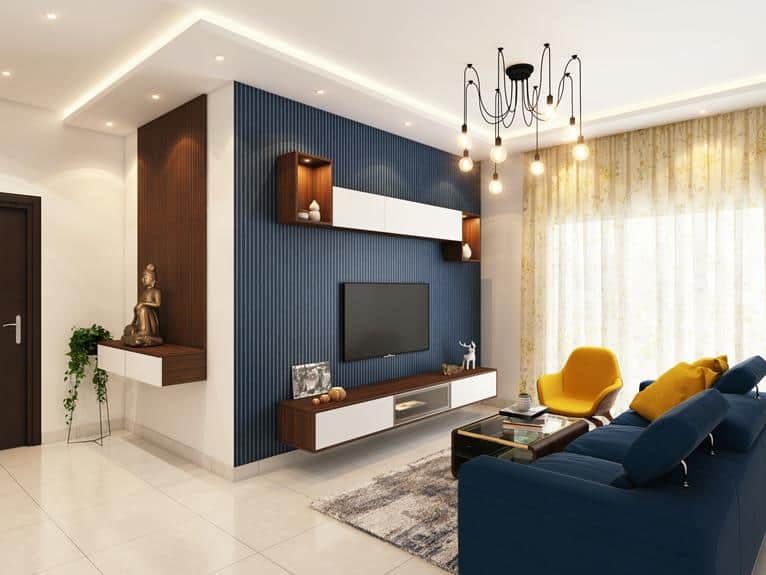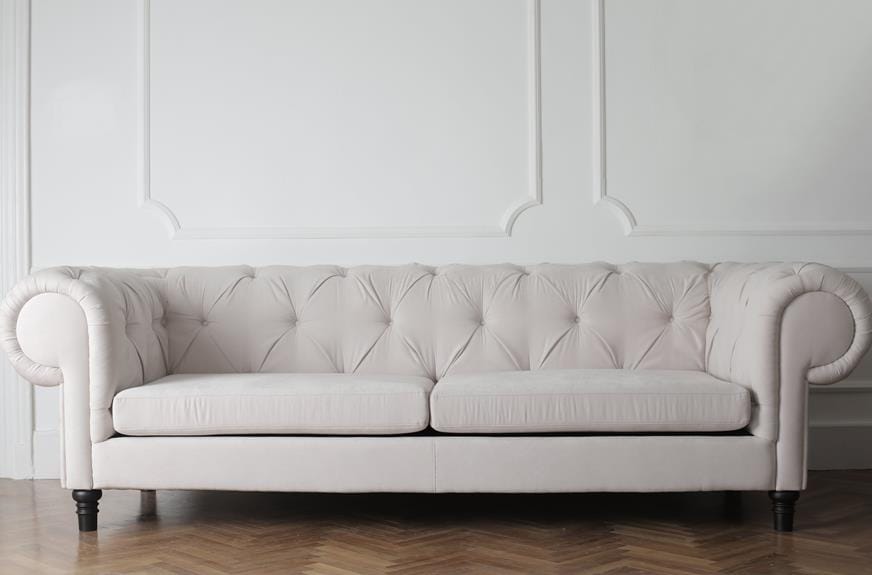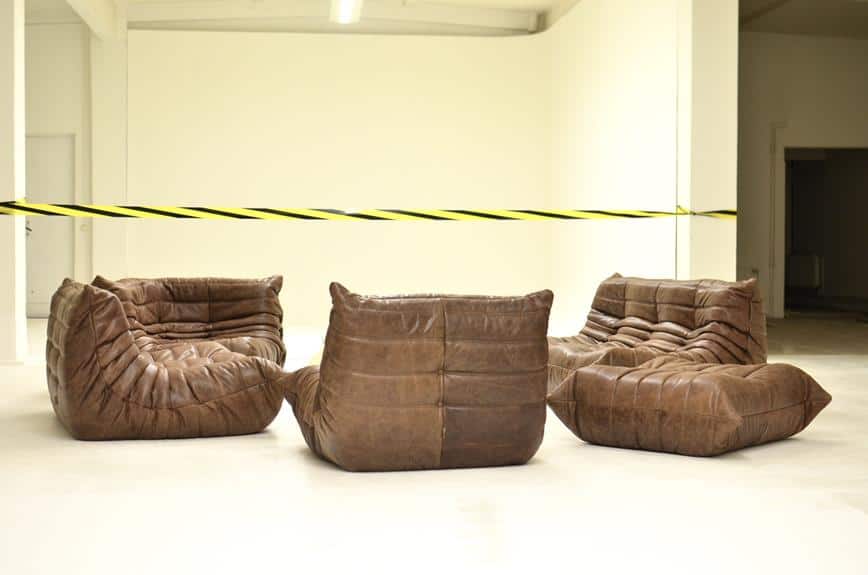The best area rug color for a living room depends on the room's color scheme, desired atmosphere, and size.
Light colors can make a room feel larger, while dark colors are more practical for high-traffic areas.
The rug should match the furniture and can add contrast for visual interest.
Personal preference is important for a cohesive look.
Assessing Your Lifestyle
When choosing an area rug for a living room with high traffic, consider durability and ease of cleaning. Homes with children and pets should opt for rugs that can handle wear and tear. Rugs that are easy to clean will be more practical in the long term.
Darker colors or patterns can hide stains and signs of wear better than lighter ones. Rugs with a low pile are easier to vacuum and maintain without professional help, making them suitable for busy areas.
It's important to consider both style and function when selecting a rug. Light-colored rugs may make a room look larger but show dirt more easily, while darker rugs can add warmth but are more forgiving with spills. Choose a rug that suits your living room's needs and complements its decor, ensuring it can withstand daily use.
Analyzing Room Decor
Analyzing room decor requires examining the current color scheme, furniture, and flooring to choose an area rug that fits the living room's look. The rug should match the room's colors and contribute to a unified and welcoming atmosphere. It's important to find a rug that either stands out or blends in, depending on the design goal.
When choosing a rug, consider the main colors of the living room. A colorful rug can add interest to a room with neutral tones, while a room with many colors might benefit from a simple rug to avoid a cluttered appearance.
The style of the furniture is also important. A traditional Persian rug may not suit very modern furniture, but a geometric rug might enhance contemporary styles.
The flooring type also affects rug choice; a soft rug can offset the hardness of tile, and a thin rug is preferable over carpet to prevent a bulky look.
The aim is to create a balanced interior that reflects personal style and improves the room's function and look. By analyzing the decor, one can select a rug that is both attractive and functional, making for a coherent living space.
Understanding Color Psychology
The psychology of color impacts the atmosphere of a living room, guiding homeowners in picking an area rug that matches the mood and style they want. This field studies how colors influence emotions and behavior. The color of an area rug can change how the room feels.
Neutral colors like beige, gray, or cream on a rug can create a calm environment, suitable for relaxation. These colors also allow for flexible decorating. On the other hand, bright colors such as red, blue, or emerald add energy and can be the centerpiece of the room, encouraging excitement or creativity.
The perceived size of the room can be affected by rug color. Light colors can make a space feel larger, while dark colors can make it feel snug and are also better for hiding dirt in high-traffic areas.
When choosing a rug color, consider lifestyle factors like children and pets; some colors hide spills and wear better. While color psychology can guide decisions, personal preference is important for satisfaction with the choice. A rug color that appeals to the homeowner will help the living room feel complete and enjoyable.
Complementing Furniture Tones
Choose an area rug that matches your living room furniture's colors to create a unified look. Rugs can either contrast or blend with your furniture. For neutral-colored furniture, consider a bold rug to make it stand out. If your furniture is colorful, select a rug with muted colors to keep the room balanced.
For a room with furniture all in one color, a rug in a complementary shade can add interest. For example, a navy sofa could pair well with a beige or grey rug for a balanced look. Textured neutral rugs can also add warmth to the space.
Darker rugs are practical for hiding stains in high-traffic areas but should not clash with the furniture. Lighter rugs can make a room appear larger and brighter, as long as they match the furniture.
The ideal rug color should fit with your furniture's color scheme, enhance the room's design, and remain appealing over time.
Creating Contrast and Balance
Choose an area rug that contrasts or complements your furniture to create balance in your living room. Light-colored rugs make small or dark rooms feel larger and more open, while dark rugs add depth and warmth, and hide wear and tear well. Mid-tone rugs are a good balance, as they conceal dirt and stains and keep the room looking elegant with less effort.
Patterned rugs can also create contrast and tie in different colors from the room's decor. Select a pattern that matches the room's size and decor; large patterns can be a focal point, while small patterns add subtle texture. Solid-colored rugs can either calm a busy room or add a splash of color to a simple decor.
Your goal is to achieve a balanced and cohesive look that enhances your living room's atmosphere.
Choosing Between Light and Dark
When selecting a living room area rug, it's important to consider both color and practicality. Light-colored rugs make small or dimly lit rooms appear larger and more open, offering a modern look. However, they show dirt more easily and may need more cleaning. Dark-colored rugs hide dirt and wear well, which is ideal for busy living rooms. They also create a cozy and sophisticated atmosphere but can make a space feel smaller.
Rugs with patterns or mid-tone colors are versatile, hiding dirt without the maintenance of light rugs or the space-reducing effect of dark ones. Adding texture to the rug can also enhance the room's look, making it feel luxurious and welcoming. The decision between light and dark rugs should consider room size, traffic, and the intended ambience.
Considering Rug Textures
When choosing a rug, it's important to consider both texture and color to achieve both comfort and style in your living room. The texture affects the room's feel and practicality. The right texture can make a space look good and suit your lifestyle, whether you have children, pets, or want a luxurious touch.
High-pile rugs are soft and warm, suitable for a cozy feel but may need more cleaning if you have pets or children. Low-pile rugs are easier to clean and more durable, ideal for busy areas.
Neutral-colored rugs with textures like friezes or cut and loop styles add depth and adaptability to various decorating styles. Textures can also influence how big a room feels—lighter colors with certain textures can make a room seem larger, while darker colors with rich textures add elegance and hide wear.
Rug Maintenance and Upkeep
Maintaining a living room rug is crucial for its appearance and durability. Regular upkeep keeps the room looking good and allows the rug to last longer. High-pile rugs may need professional cleaning to remove deep dirt and allergens, while low-pile rugs can usually be kept clean with frequent vacuuming.
Vacuuming regularly is essential to eliminate surface dirt and prevent it from getting trapped in the rug's fibers. To reduce uneven wear, rotate your rugs every few months, particularly in areas with a lot of foot traffic. This practice helps maintain the rug's color and texture.
Using a compatible rug pad is important for maintenance. A quality pad provides extra comfort and prevents the rug from slipping, which protects both the rug and the floor. Protect rugs from prolonged sunlight to prevent fading. Quickly addressing spills can stop stains from becoming permanent and extend the rug's life.




